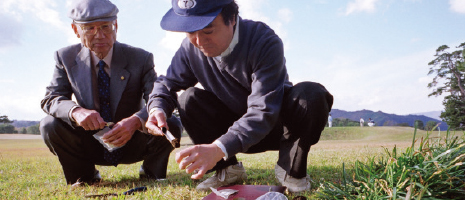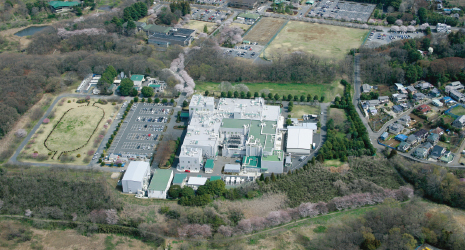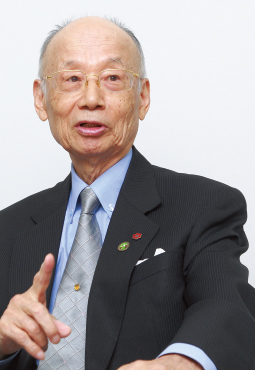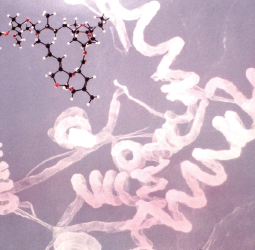Home > Highlighting JAPAN >Highlighting Japan December 2015>Science & Technology
Highlighting JAPAN


Finding Remedies in the Soil
Nobel Prize winner Satoshi Ōmura
Professor Satoshi Ōmura, a joint recipient of the 2015 Nobel Prize in Physiology or Medicine, has discovered organic compounds produced by microorganisms found in the soil that are being used to free hundreds of millions of people from the ravages of infectious diseases.
Satoshi Ōmura, distinguished emeritus professor at Kitasato University in Tokyo, shared the 2015 Nobel Prize in Physiology or Medicine for his work in discovering the base compound of ivermectin, an organic chemical that is rescuing hundreds of millions of people in Africa and Latin America from the threat of devastating tropical diseases. A bioorganic chemist, he has identified numerous compounds produced by microbes, designated their structure and contributed to the development of many pharmaceutical drugs. When asked for his reaction to winning the prize, Ōmura replies: “I would like to share half of my award with microorganisms.”
In 1975, Ōmura discovered that a new type of actinomycete bacteria in the soil of a Shizuoka Prefecture golf course produced the compound avermectin, which possesses unique and unprecedented antiparasitic properties. Collaborating with the U.S.-based pharmaceutical company Merck, he developed avermectin into a more potent derivative, ivermectin, which was marketed commercially in 1981 as an antiparasitic veterinary drug. Merck scientists and World Health Organization experts subsequently demonstrated that ivermectin was highly effective against onchocerciasis (river blindness), a disease that had plagued human populations in Africa for centuries. This work led to ivermectin, marketed under the brand name Mectizan®, being registered for human use and immediately donated for as long as needed to combat onchocerciasis.
Ivermectin proved ideal for treating river blindness, caused by infection with intestinal filarial worms, called Onchocerca volvulus, transmitted by the bite of blood-sucking blackflies in Africa, as well as in South and Central America and the Arabian peninsula, where it had been spread by human activities. Onchocerciasis causes disfiguring skin disease, visual impairment and permanent blindness. The drug was later found to also be extremely effective at combatting lymphatic filariasis (elephantiasis), caused by infection with similar filarial, threadlike microscopic worms transmitted via mosquito bites. Infection can lead to grotesque swelling of limbs which, through secondary infection, resemble those of an elephant. Since ivermectin has proven to be extremely safe, with few side effects, and is provided free of charge, it can be distributed easily to poor regions not served by doctors, thereby preventing widespread infection and leading to the prospect of disease eradication.
Mectizan® is provided free to nations where onchocerciasis or lymphatic filariasis exist, and is currently dispensed to around 300 million patients annually, liberating them and their communities from the threat of two of the world’s most disfiguring and stigmatizing diseases. Onchocerciasis and lymphatic filariasis, which once ravaged regions of Africa with horrific consequences, have already been eradicated from several regions, and both are forecast to be eliminated as public health problems worldwide within the next decade.
Professor Ōmura says he still vividly remembers the day he visited a village in Ghana where onchocerciasis had first been identified as a major problem, with well over 30 percent of the adult residents having succumbed to blindness. “When I went to the elementary school there, the children taking Mectizan® appeared to be very healthy. They knew nothing of places called Japan or Tokyo—saying they had never even heard those names—but when they heard the word Mectizan®, they would excitedly say, ‘Mectizan®! I know that! I take it!’ And they talked to me about it. That made me so happy.” He beams at the memory.
Ōmura has discovered 52 new species of microorganisms so far, and over 470 new active compounds have come from them. These compounds have been commercialized as anticancer drugs, antibiotic medicines (for human and animal use), agricultural chemicals and biological reagents. When considering his contributions to the health of humans and pets, to livestock farming and more, it is clear that people around the world, including those in advanced nations, owe a great debt to Ōmura.
“What I place above all else is serving humankind,” Ōmura states modestly, “and what I value just as much as my research is developing talented people who will comprise the next generation. Over the years my laboratory has turned out over 120 scientists and more than 30 professors, and I intend to continue developing people.”
While as a biochemist Ōmura continues to singlemindedly find new compounds that can be developed into new drugs to save even more lives, he is also involved in enterprises that foster people and regions, such as a hot springs facility, an art museum and the Yamanashi Academy of Sciences in his home prefecture of Yamanashi. Seeing how he has discovered, nurtured and developed microorganisms and people throughout his career, Ōmura’s promise to continue to have a positive influence on the future health of humankind reflects both his innermost beliefs as well as that of the philosophy of the nation’s prestigious Kitasato Institute, where he has spent his entire career: namely, to apply the fruits of scientific research for the benefit of all.
© 2009 Cabinet Office, Government of Japan










